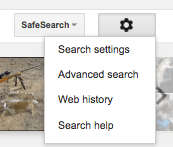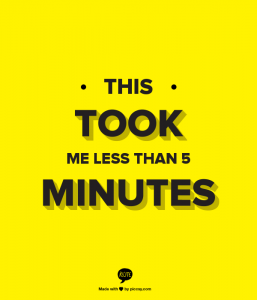Doesn’t it just drive you crazy when you’re trying to read a magazine and you keep having to flip to different pages to finish each article. No?
That’s because you read a magazine the way most people do, flipping through to see which articles are interesting to you rather than starting from the beginning and reading straight through to the end the way weirdos like me do it. Magazine publishers design their issues based on normal reading habits. My habits aren’t normal.
I Wrote This Sub-Heading Just For You
Which brings us to another way in which I’m strange, I read blog posts the same way: I start at the beginning and read through to the end. As a writer who produces content for the web, I had to do my research to figure out that this isn’t normal.
It’s not just me. Especially tech-minded people see the world differently than the audiences they sell to, a lesson they had to be reminded of by Justin Jackson. Whatever your personal vision of “normal” is, probably isn’t. When you to need to reach people that aren’t just like you, you have to get outside of your own head.
If I want people to read what I write, I had to figure out how to appeal to the normal reader, rather than doing what comes naturally to me.
Do Your Research
It’s human nature to assume that the way we like to do things is the best and most obvious way to do them. It sure would make marketing easier if that was the way it worked. Instead, figuring out what people respond to is hard work and involves a lot of research, followed with trial and error.
If you start a blog to promote your business, you can’t just sit down and brainstorm a list of all the topics you think would be interesting to write about. If you’re lucky, there will be some overlap between what you want to write about and what your target audience wants to read, but you can’t count on it.
Instead, you need to go where your target audience is and learn what they’re responding to.
 The Best Way to Learn About Your Audience.
The Best Way to Learn About Your Audience.
If you can contact them directly, this is the gold standard!
Surveys, calls to clients, email requests for feedback – if you have enough of a relationship with members of your target audience to get information on what they want to read about without annoying them, then use it. Few things will serve your marketing as well as taking the time to listen to your current customers (or people just like them) about their problems, concerns, and needs.
What Next?
Failing that (or to supplement that), find the other blogs in your space and lurk. Don’t worry. It’s not creepy to lurk on a blog or website the way it is in real life. It’s a valid and fully expected way for you to gather information about what people like.
Research the blogs and publications that are getting the most visits in your industry, as well as the ones that get the most engagement (they’re not always the same):
- This tip probably goes without saying, but Google some of the key terms related to what you do and see what comes up.
- Check out what’s listed for your industry on Alltop.com
- Use FollowerWonk’s search function to find some of the people with the most followers in your industry.
This will get you started. Once you’ve found a few of the top blogs in your industry, it’s easy to follow the trail to more influential sites.
You see, bloggers and websites that get to the top of the food chain pretty much always get there with the help of other bloggers and websites. That means the guys you find that are influential in your industry are probably following, linking to, and otherwise connected with other influential sites in your industry. Once you find your first two or three, they’ll lead you to the rest.
Pay Attention to Metrics
You don’t want to just read these guys. You want to pay careful attention to the things they write that get the most shares and comments. These are the topics your readers care about.
Obviously, you shouldn’t straight up copy the big guys, but use what you learn there as a launching board for collecting ideas for your own blog.
Quick note: this isn’t a step you do once and are done with. Once you’ve collected a list of relevant blogs in your space, make them part of your weekly (or even better, daily) research routine so you can stay up to date on what people are concerned about in your industry. This will not only help you regularly come up with topic ideas, it will also help you stay connected to your industry.
You can use feedly to collect all the blogs you want to follow into one stream. And of course, follow them all on twitter, Facebook, Google+ and LinkedIn.
If what you discover your audience likes seems totally counter-intuitive, all that means is that you’re not normal. If you’d done your marketing based on the way you think, you’d have failed. Now, you can craft your marketing efforts based on what matters: your audience.








